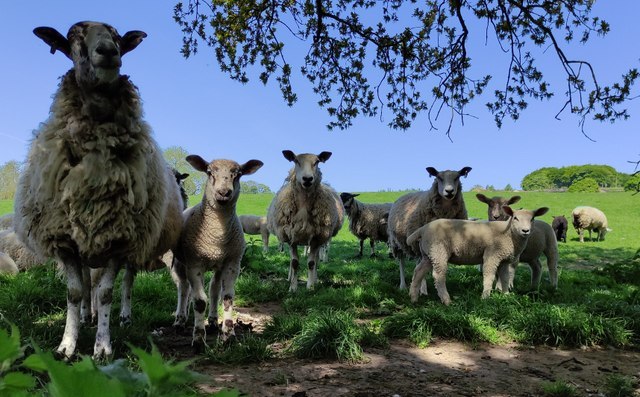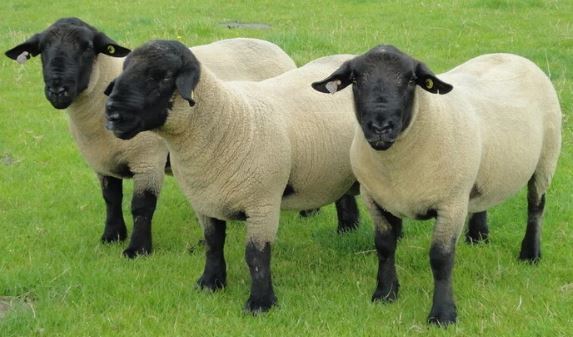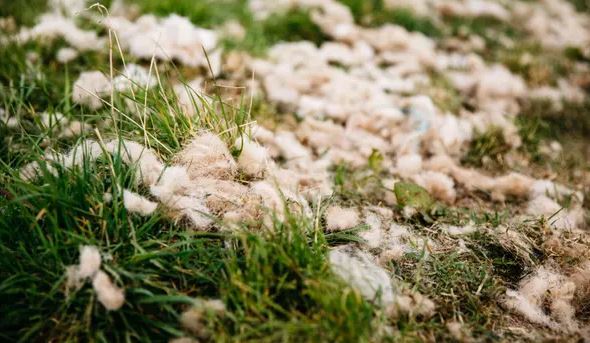WMT #10: Ovine Observations

The cache, a camo-taped preform tube, is hidden at a shady spot just off the trail as it approaches Field Head Farm at the western end of the cluster of farms and cottages which form the hamlet of West Morton.
As I was placing the cache, a group of nearby sheep accompanied by numerous lambs and enjoying the shade came across to stare intently - curious as to what was going on.
Although I have of course seen numerous ovines during my rural explorations, it took a while to identify what species this was as it did not seem to fit any of the pure breeds - which is because they were cross breeds - hybrids bred for their desired combination of characteristics.

In this case the adults (at least) were North of England Mule (NEML) Sheep - a cross-bred sheep sired by the Bluefaced Leicester ram with either a Swaledale or Northumberland type Blackface dam - all famed for their hardiness, thriftiness and longevity is regarded as 'one of the best all-rounders'.
The lambs, having few or no black markings, were probably a further cross-breed - maybe with a Beltex, which were also spotted in the group. All a bit complex, but of course well understood by sheep farmers and breeders, who select and produce the best mix for local conditions and required yields.

The NEML is renowned for her ability to rear ample crops of lambs even under the harshest conditions with minimal attention, offering ease of shepherding. Lamb crops from well-bred Mule ewes average 175%–200% - more is not unusual. General practice is to selectively breed from the ewe lamb in its first year.
As well as being a first-rate mother of prime meat lambs, she also produces an easily clipped fleece, good to handle and weighs well.
To ensure quality for purchasers, all NEML lambs must carry an official identity tag, which provides full traceability back to the farm of origin.

Now for some sheepy QI facts . . .
1. There are over 90 breeds of sheep in the UK, each with their own characteristics, appearance and habits. The most popular and common include Welsh Mountain, Jacob, Hebridean, Bluefaced Leicester, Texel, Shropshire, Black Welsh Mountain, Shetland, Kerry Hill, Cheviot, Romney, Herdwick, Suffolk, Swaledale, Rough Fell and Ryeland sheep.

Jacob sheep

Suffolk sheep

Shropshire sheep
Sheep breeds may be classified into six main types: meat, fine wool, long wool, dual purpose, hair, and minor breeds.
2. There are around 15M sheep in the UK of which some 2M (13%) live in Yorkshire/ Humberside. The region with the most sheep is the south-west with just over 3M (20%).

Swaledale sheep
3. Spring marks the start of lambing season in the UK, but the physically demanding task of sheep shearing generally takes place between May and July.
4. Sheep shearing facts:
- Britain’s 15 million sheep produce around 30M kg of wool/year.
- Clipping takes place July-September in the Lake District. In warmer parts of Britain, shearing begins in May
- Innovative uses for Herdwick fleece and other low-value wool fibres include insulation materials, sound absorbers and Solidwool, a sustainable alternative to fibreglass.
- A typical fleece weighs 1.5-10kg (a Herdwick fleece weighs 2-3kg). The heaviest fleece ever shorn belonged to an overgrown sheep rescued by the Australian RSPCA in 2022. The wool, which took 45 minutes to remove, weighed over 41kg.

Texel sheep
Unfortunately, in UK the price of wool crashed during the pandemic to an average of 32p/kilo - in comparison a lamb is typically worth £90-£120. Although the wool price has recovered somewhat, with the cost of shearing at approx £1.65/sheep, it is simply not worth doing it any more. So, farmers are increasingly turning to wool-shedding breeds with most of the shed wool used by birds for nesting material.

Wool-shedding sheep
If not maintained and shorn every year, a fleece can a serious welfare issue. Wool-shedding sheep are more resistant to a condition called fly strike – where an animal is eaten alive by maggots that hatch in its fleece. Because there’s no wool, they don’t get struck . . . 'that’s labour saving: I don’t have to run around all the time, worrying and looking for maggots in sheep. Also, I’m not using nasty chemical compounds to treat the animals' observes a typical sheep farmer.

Shed wool in a field
See here for info on world wool production and here for lamb production.